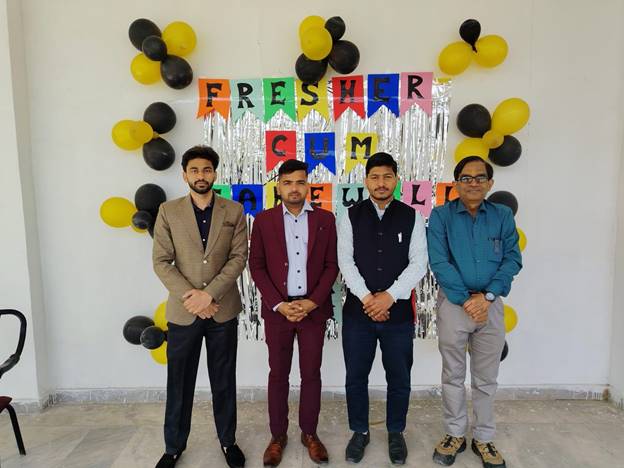Applied Science Department
About us
The Department of Applied Sciences RPIIT Technical Campus teaches and promotes practical aspects of Basic Science subjects to build a solid foundation of the Engineering Education. The department prepares students for core engineering branches by educating them in the Basics of Physics, Chemistry, Mathematics, Environmental Science and Communication skills in the first year of B.Tech. (All Branches) course. The department has well competent and ambitious faculty which is strongly dedicated towards teaching, workshops, presentations, laboratories and a keen interest in solving the problems of students in theory as well as practical sessions.
What does an Applied Science Student do?
Students develop valuable communication skills, explore science and literature and learn to critically examine their society. The department engages the students in the comprehensive education for the imperative subjects as Mathematics, Physics, Chemistry and Professional Communication, which are like a torch house for their basic approach, facilitating them to utilize the knowledge in almost all the work areas. For the all round development of the students, the department endeavors to organize various co-curricular activities.
Mathematics is indispensable for the engineering community. A strong foundation in math can translate into increased understanding and regulation of your emotions, improved memory, better problem-solving real life skills and to solve engineering problems.
Physics is crucial to the understanding of the world around us. Students who study engineering physics are prepared to work on forefront ideas in science and technology, in academic circles, the government or the private sector. Physics encompasses the study of the universe from the largest galaxies to the smallest subatomic particles.
Chemistry is also the basis of many engineering courses. Branch-specific curriculum has been designed for each branch of engineering. Knowing something about chemistry is worthwhile because it provides an excellent basis for understanding the physical universe we live in.
Environmental Studies make the students aware of the environment that sustains us, our families and communities at present time and in the future.
The Language Laboratory is an integral part of the department. Students receive training in written and verbal communication essential to succeed in the workplace. It offers personalized counseling, explore themselves, resume building and mock interviews.
Message from HOD
It gives me immense pleasure to lead the Department of Applied Science of RPIIT Medical and Technical Campus, which is one of the premier institutions of Haryana. The prime motive of our Department is to provide quality education to our students. The Applied Science Department is reputed for its knowledgeable, hardworking and caring faculty members as well as enthusiastic, intelligent and disciplined students. Me and my team will leave no stone unturned to make you stay comfortable and eventful both in terms of academic, extra co-curricular activities. We extend personal care to all students throughout their session. Students of our Department will be equipped with the latest knowledge with hands-on skills in their respective fields of study. We lay emphasis on key areas such as teaching/learning methodology with special focus on developing strong fundamentals and enhancing analytical abilities. Time to time Industrial visits are arranged for the students for more exposure as well, that will certainly pave a red carpet welcome to the hard working students in the field of Engineering.
I wish Best of Luck to all of them….!!!
With Kind Regards,
Ms. Manju Taneja
Head of Department
Program outcome
No details found!!
Labs Name Physics Lab. 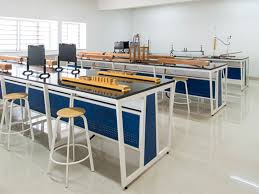
Engineering Chemistry Lab. 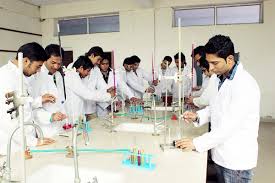
Programming For Problem Solving Lab. 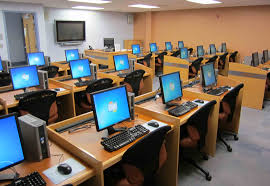
Communication/Language Lab. 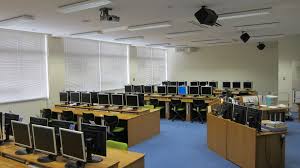
Engineering Graphics & Design Lab 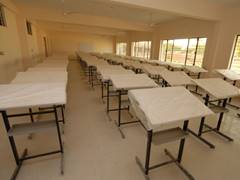
Idea Lab 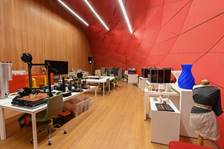
Manufacturing Workshop Lab 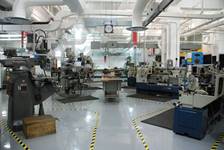
Basic Electrical Eng. Lab 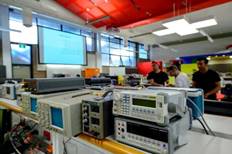
KURUKSHETRA UNIVERSITY KURUKSHETRA
SCHEME OF STUDIES & EXAMINATIONS
B.Tech. 1ST YEAR COMMON FOR ALL BRANCHES (w.e.f. 2024-25)
SEMESTER-I
S. No. 1 2 3 4 5 6 7 8 9 | Course No./ Code B24-HSM-101 OR B24-BSC-106 B24-BSC-101/ B24-BSC-102/ B24-BSC-103 OR B24-ESC-103/ B24-ESC-104 B24-ESC-101 OR B24-BSC-104/ B24-BSC-105 B24-HSC-101 OR B24-ESC-102 B24-BSC-107/ B24-BSC-109 B24-BSC-111/ B24-BSC-112/ B24-BSC-113 OR B24-ESC-108/ B24-ESC-109 B24-ESC-105 OR B24-BSC-114 B24-HSC-103 OR B24-ESC-107 & B24-ESC-106 B24-VAC-101 & B24-VAC-102 OR B24-HSC-102 | Subject Universal Human Values-II: Understanding Harmony and Ethical Human Conduct | L: T: P 3:0:0
3:1:0 3:0:0 2:0:0 | Hours/ Week 3 4 3 2 | Credits 3 4 3 2 | Examination Schedule (Marks) | Duration of Exam (Hours) 3 3 3 3 | |||
End Semester Exam 70 70 70 70 | Internal Assessment 30 30 30 30 | Practical Exam -- -- -- -- | Total 100 100 100 100 | |||||||
Biology Semiconductor Physics / Introduction to Electromagnetic Theory/ Applied Physics (Only for B. Tech. Biotechnology) | ||||||||||
Basic Electrical and Electronics Engineering/ Basic Electrical Engineering Programming for Problem Solving | ||||||||||
Engineering Chemistry/ Chemistry (Only for B. Tech. Biotechnology) English for Technical Writing | ||||||||||
Engineering Graphics and Design Mathematics-I/ Applied Mathematics-I (Only for B. Tech. Biotechnology) Semiconductor Physics Lab/ Electromagnetic Lab/ Applied Physics Lab (Only for B. Tech. Biotechnology) | 1:0:0 3:1:0 0:0:2 0:0:2 0:0:2 | 1 4 2 2 2 | 1 4 1 1 1 | 70 70 -- -- -- | 30 30 40 40 40 | -- -- 60 60 60 | 100 100 100 100 100 | 3 3 3 3 3 | ||
Basic Electrical and Electronics Engineering Lab/ Basic Electrical Engineering Lab Programming for Problem Solving Lab | ||||||||||
Engineering Chemistry Lab English Language Lab | ||||||||||
| Manufacturing Processes Workshop | 0:0:3 | 3 | 1.5 | -- | 40 | 60 | 100 | 3 | ||
Engineering Graphics and Design Lab Personality Development and Soft Skills | 0:0:4 2:0:0 | 4 2 | 2 1 | -- -- | 40 100 | 60 -- | 100 100 | 3 - | ||
| IDEA Workshop | 0:0:3 | 3 | 1 | -- | 100 | -- | 100 | - | ||
Design Thinking TOTAL | 0:0:3 | 3 27/29 | 1.5 21/22 | -- 350/350 | 100 470/410 | -- 180/240 | 100 1000/1000 | - | ||
Note:- 1. Students will study one of the subjects given at Sr. No. 1, 2, 3, 4, 6, 7, 8, and 9 as per the in SEMESTER-I/SEMESTER-II, which is to be decided by the concerned institution. 2. For serial no. 8 the subjects will be either B24-HSC-103 OR both (B24-ESC-107 & B24-ESC-106), whereas for Serial No. 9, either both (B24-VAC-101 & B24-VAC-102) OR B24- HSC-102.
3. The subjects should be chosen from given combinations/options at particular serial number so that the total number of credits for the first year 43.
KURUKSHETRA UNIVERSITY KURUKSHETRA
SCHEME OF STUDIES & EXAMINATIONS
B.Tech. 1ST YEAR COMMON FOR ALL BRANCHES (w.e.f. 2024-25)
SEMESTER-II
S. No. 1 2 3 4 5 6 7 8 9 | Course No./ Code B24-HSM-101 OR B24-BSC-106 B24-BSC-101/ B24-BSC-102/ B24-BSC-103 OR B24-ESC-103/ B24-ESC-104 B24-ESC-101 OR B24-BSC-104/ B24-BSC-105 B24-HSC-101 OR B24-ESC-102 B24-BSC-108/ B24-BSC-110 B24-BSC-111/ B24-BSC-112/ B24-BSC-113 OR B24-ESC-108/ B24-ESC-109 B24-ESC-105 OR B24-BSC-114 B24-HSC-103 OR B24-ESC-107 & B24-ESC-106 B24-VAC-101 & B24-VAC-102 OR B24-HSC-102 | Subject Universal Human Values-II: Understanding Harmony and Ethical Human Conduct | L: T: P 3:0:0
3:1:0 3:0:0 2:0:0 | Hours/ Week 3 4 3 2 | Credits 3 4 3 2 | Examination Schedule (Marks) | Duration of Exam (Hours) 3 3 3 3 | |||
End Semester Exam 70 70 70 70 | Internal Assessment 30 30 30 30 | Practical Exam -- -- -- -- | Total 100 100 100 100 | |||||||
Biology Semiconductor Physics / Introduction to Electromagnetic Theory/ Applied Physics (Only for Biotechnology) | ||||||||||
Basic Electrical and Electronics Engineering/ Basic Electrical Engineering Programming for Problem Solving | ||||||||||
Engineering Chemistry/ Chemistry (Only for Biotechnology) English for Technical Writing | ||||||||||
Engineering Graphics and Design Mathematics-II/ Applied Mathematics-II (Only for Biotechnology) Semiconductor Physics Lab/ Electromagnetic Lab/ Applied Physics Lab (Only for Biotechnology) | 1:0:0 3:1:0 0:0:2 0:0:2 0:0:2 | 1 4 2 2 2 | 1 4 1 1 1 | 70 70 -- -- -- | 30 30 40 40 40 | -- -- 60 60 60 | 100 100 100 100 100 | 3 3 3 3 3 | ||
Basic Electrical and Electronics Engineering Lab/ Basic Electrical Engineering Lab Programming for Problem Solving Lab | ||||||||||
Engineering Chemistry Lab English Language Lab | ||||||||||
| Manufacturing Processes Workshop | 0:0:3 | 3 | 1.5 | -- | 40 | 60 | 100 | 3 | ||
Engineering Graphics and Design Lab Personality Development and Soft Skills | 0:0:4 2:0:0 | 4 2 | 2 1 | -- -- | 40 100 | 60 -- | 100 100 | 3 - | ||
| IDEA Workshop | 0:0:3 | 3 | 1 | -- | 100 | -- | 100 | - | ||
Design Thinking TOTAL | 0:0:3 | 3 27/29 | 1.5 21/22 | -- 350/350 | 100 470/410 | -- 180/240 | 100 1000/1000 | - | ||
Note:- 1. Students will study one of the subjects given at Sr. No. 1, 2, 3, 4, 6, 7, 8, and 9 as per the in SEMESTER-I/SEMESTER-II, which is to be decided by the concerned institution. 2. For serial no. 8 the subjects will be either B24-HSC-103 OR both (B24-ESC-107 & B24-ESC-106), whereas for Serial No. 9, either both (B24-VAC-101 & B24-VAC-102) OR B24- HSC-102.
3. The subjects should be chosen from given combinations/options at particular serial number so that the total number of credits for the first year 43.
| B24-BSC-101 | Semiconductor Physics | |||||||
| L | T | P | Credit | End Semester Exam | Internal Assessment | Total | Time | |
| 3 | 1 | - | 4 | 70 | 30 | 100 | 3 h | |
| Purpose | To introduce the fundamentals of solid state physics and its applications to the students. | |||||||
Course Outcomes | ||||||||
| CO1 | To make the students aware of basic terminology of crystal structure. | |||||||
| CO 2 | Introduce the elementary quantum mechanics, which will be useful in understanding the concepts of solid state physics. | |||||||
| CO 3 | Discussion of classical free electron theory, quantum theory and Band theory of solids. | |||||||
| CO 4 | Basics and applications of semiconductors. | |||||||
Unit - I
Crystal Structure: Crystalline and Amorphous solids, Crystal Structure: lattice translation vector, symmetry operations, space lattice, basis; Unit cell and Primitive cell, Fundamental types of lattices: two dimensional and three dimensional Bravais lattices; Characteristics of Unit cells: Simple Cubic (SC), Body Centred Cubic (BCC), Face Centred Cubic (FCC), Hexagonal Close Packed (HCP) structure; Simple crystal structures: Sodium Chloride, Cesium Chloride, Diamond, Cubic Zinc Sulfide; Miller
Indices, Bonding in Solids, Point defects in crystals: Schottky and Frenkel defects. Unit – II
Quantum Theory: Need and origin of Quantum concept, Wave-particle duality, Phase velocity and group velocity, Uncertainty Principle and Applications; Schrodinger’s wave equation: time-dependent and time –independent; Physical Significance of wave function .
Unit – III
Free Electron Theory: Classical free electron theory: electrical conductivity in metals, thermal conductivity in metals, Wiedemann-Franz law, success and drawbacks of free electron theory; Quantum free electron theory: wave function, eigen values; Fermi-Dirac distribution function, Density of states, Fermi energy and its importance.
Band theory of Solids: Bloch theorem, Kronig-Penney Model (qualitative), E versus k diagram, Brillouin Zones, Concept of effective mass of electron, Energy levels and energy bands, Distinction between metals, insulators and semiconductors, Hall effect and its Applications. Unit –IV
Semiconductors: Conduction in Semiconductors, Intrinsic Semiconductors: Conductivity of charge carriers, Carrier concentration in intrinsic semiconductors; Extrinsic Semiconductors: n-type semiconductors, p-type semiconductors, charge carrier concentration in extrinsic semiconductors. Semiconductor Devices: The p-n junction diode, Current-voltage characteristics of p-n junction; Half wave and full wave rectifier, The Transistor: NPN and PNP transistor, Basic configuration in common emitter, common base and common collector; Metal-Semiconductor Junction (Ohmic and Schottky).
Suggested Books:
1. Applied Physics for Engineers, Wiley India Pvt. Ltd.
2. Introduction to Solid State Physics, John Wiley & Sons. .
3. Concepts of Modern Physics (5th edition), Tata McGraw-Hill Publishing Company Limited. 4. Solid State Physics, New Age International (P) Limited.
5. A Textbook of Quantum Mechanics, McGraw Hill Education (India) Private Limited.Introduction to Nanotechnology, John Wiley & Sons.
Note: The paper setter will set the paper as per the question paper templates provided.
| B24-BSC-111 | Semiconductor Physics Lab | |||||||
| L | T | P | Credit | Practical Exam | Internal Assessment | Total | Time | |
| - | - | 2 | 1 | 60 | 40 | 100 | 3h | |
| Purpose | To acquaint the students with the basic phenomenon/concepts of solid state physics. | |||||||
| Course Outcomes | ||||||||
| CO1 | To make the students familiar with the basic phenomenon using practical aspects related with Semiconductor Physics. | |||||||
| CO2 | To impart the practical knowledge of the experiments related with quantum theory and Band theory of solids. | |||||||
Note: Student will be required to perform at least 10 experiments out of the following list.
1. To study the I-V characteristics of a p-n diode.
2. To find the value of Hall Coefficient of semiconductor.
3. To find the value of e/m for electrons by Helical method.
4. To find the band gap of intrinsic semiconductor using four probe method.
5. To find the flashing and quenching potential of Argon and to find the capacitance of unknown capacitor.
6. To find the value of Planck’s constant by using photoelectric cell.
7. To find the temperature coefficient of resistance by using Pt resistance thermometer by post office box.
8. To find the ionization potential of Argon/Mercury using a thyratron tube.
9. To study the variation of magnetic field with distance and to find the radius of coil by Stewart and Gee’sapparatus.
10. To study the characteristics of (Cu-Fe, Cu-Constantan) thermocouple.
11. To calculate the hysteresis loss by tracing a B-H curve.
12. To find the frequency of ultrasonic waves by piezoelectric methods.
13. To verify Richardson thermionic equation.
14. To realize half wave and full wave diode rectifier using CRO.
Suggested Books:
1. C.L.Arora, B. Sc. Practical Physics, S. Chand.
2. B.L. Worshnop and H, T, Flint, Advanced Practical Physics, KPH.
3. S.L. Gupta & V. Kumar, Practical Physics, Pragati Prakashan.
| B24-BSC-102 | Introduction to Electromagnetic Theory | |||||||
| L | T | P | Credit | End Semester Exam | Internal Assessment | Total | Time | |
| 3 | 1 | - | 4 | 70 | 30 | 100 | 3 Hrs. | |
| Purpose | To introduce the fundamentals of electromagnetic theory to the students for applications in Engineering field. | |||||||
Course Outcomes | ||||||||
| CO 1 | Introduce the basic concepts of Electrostatics in vacuum. | |||||||
| CO 2 | Introduce the basic concepts of Magnetostatics in vacuum. | |||||||
| CO 3 | Discuss electrostatics and magnetostatics in linear dielectric medium. | |||||||
| CO 4 | Basics of Maxwell’s equations and electromagnetic waves. | |||||||
Unit - I
Electrostatics in Vacuum: Calculation of Electric Field: Coulomb’s law, Continuous charge distribution; Divergence and Curl of Electrostatic Fields: Field lines, flux, Gauss’s law, Applications of Gauss’s law; Electrostatic Potential: Comments on potential, Poisson’s and Laplace’s Equation, the potential of a localized charge distribution; Electrostatic Boundary Conditions; Work and Energy in Electrostatics: the work done to move a charge, the energy of a point and continuous charge distribution, Conductors: basic properties, induced charges.
Unit - II
Electrostatics in a Linear Dielectric Medium: Polarization: dielectrics, induced dipoles, alignments of polar molecules; The field of a Polarized Object: bound charges and its physical interpretation; The Filed Inside a Dielectric; The Electric Displacement: Gauss’s law in the presence of dielectrics, A deceptive parallel, Boundary conditions; Linear Dielectrics: Susceptibility, Permittivity, dielectric constant, Boundary value problems with linear dielectrics, Energy in dielectric systems, Forces in dielectrics.
Unit - III
Magnetostatics: The Lorentz Force Law: magnetic fields, magnetic forces, currents; Biot- Savart law, Divergence and Curl of magnetic filed, Magnetic Vector Potential: vector potential, magnetostatic boundary conditions, multiple expansion of vector potential.
Magnetostatics in a linear magnetic: Magnetization: Effect of magnetic field on atomic orbits; The Field of a Magnetized Object: Bound currents, Physical interpretation of bound currents; The Auxiliary Magnetic Field: Ampere’s law in magnetized materials, A deceptive parallel, Boundary conditions; Linear and Nonlinear Media: magnetic susceptibility and permeability, ferromagnetism.
Unit - IV
Faraday’s law: Electromotive Force: Ohm’s law, Motional emf; Electromagnetic Induction: Faraday’s law, The inducedelectric field, inductance, energy in magnetic fields.
Maxwell’s Equations: Electrodynamics before Maxwell, How Maxwell fixed Ampere’s law, Maxwell’s equations, Maxwell’s equations in matter.
Electromagnetic Waves: Electromagnetic Waves in Vacuum: the wave equation for electric and magnetic field; Electromagnetic Waves in Matter: propagation in linear media, Basic concepts of wave guide, Coaxial cables.
Suggested Books:
1. David J. Griffiths, Introduction to Electrodynamics, Pearson Education.
2. Halliday and Resnick, Physics
3. W. Saslow, Electricity, Magnetism and Light
4. Bhattacharya &Nag, Engineering Physics
Note: The paper setter will set the paper as per the question paper templates provided.
| B24-BSC-112 | Electromagnetic Lab | |||||||
| L | T | P | Credit | Practical Exam | Internal Assessment | Total | Time | |
| - | - | 2 | 1 | 60 | 40 | 100 | 3h | |
| Purpose | To acquaint the students with the basic phenomenon related to Electromagnetic Theory. | |||||||
| Course Outcomes | ||||||||
| CO1 | To make the students familiar with the experiments related with electromagnetism. | |||||||
| CO2 | To understand the basic concepts related to electromagnetic induction | |||||||
Note: Student will be required to perform at least 10 experiments out of the following list.
1. To study the variation of magnetic field with distance and to find the radius of coil by
Stewart and Gee’sapparatus.
2. To study induced e.m.f. as a function of velocity of magnet.
3. To study the growth and decay of current in a LR circuit using magnetic core inductor.
4. To find the coefficient of self-inductance by Rayleigh’s method.
5. To find the coefficient of mutual inductance of two coils.
6. To determine the magnetic induction field between the pole pieces of an electromagnet.
7. To study Bio-Savart’s law.
8. To study the dependency of magnetic field on coil diameter and number of turns.
9. To investigate the equipotential liens of electric fields.
10. To draw the equipotential lines of bar electrode.
11. To draw the equipotential lines for ring electrode.
12. Verification of Farady and Lenz’s law of induction by measuring the induced voltage as function of time.
13. Measurement of induced voltage impulse as a function of the velocity of magnet.
14. To determine the dielectric constant of different dielectric materials.
15. To measure the spatial distribution of the magnetic field between a pair of identical
coils in Helmholtzarrangement.
16. To investigate the spacing between coils at which magnetic field is uniform and to
measure its spatialdistribution.
Suggested Books:
1. C.L.Arora, B. Sc. Practical Physics, S. Chand.
2. B.L. Worshnop and H, T, Flint, Advanced Practical Physics, KPH.
3. S.L. Gupta & V. Kumar, Practical Physics, PragatiPrakashan.
| B24-BSC-103 | Applied Physics | |||||||
| L | T | P | Credit | End Semester Exam | Internal Assessment | Total | Time | |
| 3 | 1 | - | 4 | 70 | 30 | 100 | 3h | |
| Purpose | To introduce the basics of physics to the students for applications in Engineering field. | |||||||
| Course Outcomes | ||||||||
| CO 1 | Introduce the fundamentals of interference and diffraction and their applications. | |||||||
| CO 2 | To make the students aware of the importance of polarization and Ultrasonics. | |||||||
| CO 3 | Introduce the basics concepts of laser and its applications. | |||||||
| CO 4 | To familiarize with concepts of nuclear radiations and its biological effects. | |||||||
Unit I
Interference: Principle of Superposition, Conditions for interference, Division of wave-front: Fresnel’s Biprism and Applications, Division of amplitude: Wedge-shaped film, Newton’s rings and Applications, Michelson Interferometer and Applications.
Diffraction: Types of diffraction, Fraunhofer diffraction at a single slit, Intensity distributiondue diffraction grating, determination of wavelength; Dispersive power and resolving power of diffraction grating. Unit II
Polarization: Polarization of transverse waves, Plane of polarization, Polarization by reflection, Double refraction, Nicol Prism, Quarter and half wave plate, Specific Rotation, Laurent ‘s half shade polarimeter, Biquartz polarimeter.
Ultrasonics: Ultrasonic waves, Properties of ultrasonic waves, Production of ultrasonic waves: Magnetostriction and Piezoelectric methods, Detection of ultrasonic waves, Measurement of velocity of ultrasonic waves, Applications of ultrasonic waves.
Unit III
Laser: Einstein’s theory of matter radiation interaction and A and B coefficients; amplification of light by population inversion, different types of lasers: gas lasers (He-Ne, CO2), solid-state lasers (ruby, Neodymium), dye lasers; Properties of laser beams: mono-chromaticity, coherence, directionality and brightness, laser speckles, applications of lasers in science, engineering and medicine.
Unit IV
Nuclear radiations and its Biological Effects: Classification of nuclear radiations, Interaction of charged particle (light and heavy) and gamma radiations with matter (basic concepts), Dosimetric units, Relative Biological Effectiveness (RBE), Typical doses from commons sources in the environment, Biological Effects, Maximum Permissible Dose, (MPD), Shielding, Radiation safety in the nuclear radiation laboratory.
Biomaterials: Introduction, Classification of biomaterials, Applications.
Suggested Books:
1. Applied Physics for Engineers, Wiley India Pvt. Ltd.
2. Concepts of Modern Physics (5th edition), Tata McGraw-Hill Publishing Company Limited.
3. A Textbook of Optics, S. Chand & Company Ltd.
4. Techniques for Nuclear and Particle Physics Experiments: A How-to Approach, Springer-Verlag.
5. Introduction to Nuclear and Particle Physics, PHI Learning Private Limited.
6. Biomaterials: The intersection of Biology and Materials Science, Pearson, New Delhi.
Note: The paper setter will set the paper as per the question paper templates provided.
| B24-BSC-113 | Applied Physics Lab | |||||||
| L | T | P | Credit | Practical Exam | Internal Assessment | Total | Time | |
| - | - | 2 | 1 | 60 | 40 | 100 | 3h | |
| Purpose | To impart the knowledge of basic concepts of Physics in Engineering. | |||||||
| Course Outcomes | ||||||||
| CO1 | To make the students familiar with the experiments related with interference and diffraction. | |||||||
| CO2 | To understand the basic phenomenon of polarization and ultrasonic | |||||||
| CO3 | To impart the practical knowledge of the experiments related with resistance using different methods | |||||||
Note: Student will be required to perform at least 10 experiments out of the following list.
1. To find the wavelength of monochromatic light by Newton’s ring experiment.
2. To find the wavelength of sodium light by Michelson’s interferometer.
3. To find the resolving power of telescope.
4. To find the wavelength of sodium light using Fresnel bi-prism.
5. To find the wavelength of various colours of white light with the help of plane transmission diffraction grating.
6. To find the specific rotation of sugar solution by using a Polarimeter.
7. To find the frequency of ultrasonic waves by piezoelectric methods
8. To verify Newton’s formula and hence to find the focal length of the given convex lens.
9. To find the frequency of A.C. mains by using Sonometer and horse shoe magnet.
10. To find the resistance of a galvanometer by post office box.
11. To find low resistance by Carrey-Foster bridge.
12. To find the value of high resistance by substitution method.
13. To compare the capacitances of two capacitors by De-Sauty’s bridge and hence to find the dielectric constantof a medium.
14. To convert a galvanometer into an ammeter of desired range and verify the same.
Suggested Books:
2. C.L.Arora, B. Sc. Practical Physics, S. Chand.
3. B.L. Worshnop and H, T, Flint, Advanced Practical Physics, KPH.
4. S.L. Gupta & V. Kumar, Practical Physics, Pragati Prakashan.
| B24-BSC-104 | Engineering Chemistry | ||||||
| L | T | P | Credit | End Semester Exam | Internal Assessment | Total | Time |
| 3 | 0 | 0 | 3 | 70 | 30 | 100 | 3h |
| Purpose | To acquaint the students with the basic phenomenon/concepts of chemistry, the student faces during course of their study in the industry and Engineering field | ||||||
| CO1 | An insight into atomic and molecular orbitals and bonding in molecules | ||||||
| CO2 | Knowledge of basic concept of spectroscopic techniques for identification of molecules | ||||||
| CO3 | To understand basics of thermodynamics and phase equilibria | ||||||
| CO4 | To understand nature of corrosion and its preventive measures | ||||||
UNIT -I
Molecular orbitals of diatomic molecules. Equations for atomic and molecular orbitals. Energy level diagrams of diatomic molecules (O2, N2, CO, NO, CN, HCl and HF). Pi-molecular orbitals of butadiene. Concept of aromaticity. Crystal field theory and the energy level diagrams for transition metal ions and their magnetic properties. Band structure of solids and the role of doping on band structures.
UNIT -II
Spectroscopic techniques and applications: Principles of spectroscopy and selection rules. Electronic spectroscopy. Fluorescence and its applications in medicine. Vibrational spectroscopy and its applications. Nuclear magnetic resonance and magnetic resonance imaging, surface characterization techniques. Diffraction and scattering.
UNIT -III
Thermodynamic functions: Internal energy, entropy and free energy. Estimations of entropy and free energies. Free energy and EMF. Criteria for feasibility/spontaneity of a process, Chemical potential, Clausius – Clapeyron equation and its application, Numerical problems.
Phase equilibria: Phase rule and derivation of phase rule equation, terms involved in phase rule (phase, component, degree of freedom), one component system (Water system), two component system (Lead silver system), application of phase equilibria.
UNIT - IV
Corrosion and its prevention: Introduction, Galvanic cell, types of Galvanic cell (Chemical and concentration cell), Cell potentials, the Nernst equation and its applications, types of corrosion (Dry and wet corrosion), electrochemical theory of corrosion, Bimetallic corrosion, Pitting corrosion, Differential aeration corrosion, water -line corrosion, stree corrosion, factors affecting corrosion rate, preventive measures of corrosion (design of material, anodic and cathodic protection and protective covering)
Text/Reference Books:
1. AICTE’s Prescribed Textbook: Chemistry – I with Lab Manual, Khanna Book Publishing. 2. Engineering Chemistry, by Manisha Agrawal.
3. University chemistry, by B. H. Mahan.
4. Chemistry: Principles and Applications, by M. J. Sienko and R. A. Plane.
5. Fundamentals of Molecular Spectroscopy, by C. N. Banwell.
6. Engineering Chemistry (NPTEL Web-book), by B. L. Tembe, Kamaluddin and M. S. Krishnan. AICTE Model Curriculum for UG Degree Course in Computer Science and Engineering 54
| B24-BSC-114 | Engineering Chemistry Lab | ||||||
| L | T | P | Credit | Practical Exam | Internal Assessment | Total | Time |
| 0 | 0 | 2 | 1 | 60 | 40 | 100 | 3h |
| Purpose | To acquaint the students with the knowledge of basic phenomenon/practicals of chemistry | ||||||
| CO1 | To make the students familiar with the titrametric methods for analysing strength of given sample | ||||||
| CO2 | To give exposure and training to handle different instruments used in various experiments of chemistry required in engineering/technological field | ||||||
Choice of 10-12 experiments from the following:
1. Determination of surface tension of a given liquid by drop number method using Stalagmometer. 2. Determination of relative viscosity by Ostwald viscometer.
3. Determination of viscosity of lubricating oil by Redwood Viscometer.
4. To synthesise drug molecule (Aspirin/ Paracetamol)
5. Determination of refractive index of given organic liquid by Abbe’s refractometer. 6. Determination of Flash point and fire point of oil by Pensky Martin appratus. 7. Determination of amount of Na and K in given water sample by Flame photometer. 8. Determination of strength of given Hydrochloric acid solution by titrating it with NaOH solution conduct metrically.
9. Determination of strength of given Hydrochloric acid solution by titrating it with NaOH solution using pH meter.
10. Determination of concentration of given sample of KMnO4 using spectrophotometer. 11. Determination of alkalinity of a given water sample.
12. Determination of Calcium and Magnesium hardness by EDTA method.
13. Determination of Chloride content in given water sample.
14. Determination of amount of dissolved oxygen in given water sample by Winkler’s method. 15. Determination of total iron content present in a given iron ore solution by using KMnO4 as oxidising agent.
16. Determination of partition co-efficient of Iodine in carbon tetrachloride and water. 17. To check the presence of a given compound in a mixture using thin layer chromatography. Books:
1. Engineering Chemistry with laboratory experiments by M. S. Kaurav, PHI learning Private ltd.
2. AICTE’s Prescribed Textbook: Chemistry – I with Lab Manual, Khanna Book Publishing
| B24-BSC-105 | Chemistry | ||||||
| L | T | P | Credit | End Semester Exam | Internal Assesment | Total | Time |
| 3 | 0 | 0 | 3 | 70 | 30 | 100 | 3h |
| Purpose | To acquaint the students with the basic phenomenon/concepts of chemistry, the student faces during course of their study in the industry and Engineering field | ||||||
| CO1 | An insight into atomic and molecular orbitals and bonding in molecules | ||||||
| CO2 | Knowledge of basic concept of spectroscopic techniques for identification of molecules | ||||||
| CO3 | To understand basics of thermodynamics and periodic properties | ||||||
| CO4 | To understand basics of stereochemistry and various organic reactions | ||||||
UNIT -I
Molecular orbitals of diatomic molecules. Equations for atomic and molecular orbitals. Energy level diagrams of diatomic molecules (O2, N2, CO, NO, CN, HCl and HF). Pi-molecular orbitals of butadiene. Concept of aromaticity. Crystal field theory and the energy level diagrams for transition metal ions and their magnetic properties. Band structure of solids and the role of doping on band structures.
UNIT -II
Spectroscopic techniques and applications: Principles of spectroscopy and selection rules. Electronic spectroscopy. Fluorescence and its applications in medicine. Vibrational spectroscopy and its applications. Nuclear magnetic resonance and magnetic resonance imaging, surface characterization techniques. Diffraction and scattering.
UNIT -III
Ionic, dipolar and van Der Waals interactions. Equations of state of real gases and critical phenomena. Thermodynamic functions: Internal energy, entropy and free energy. Estimations of entropy and free energies. Free energy and EMF. Cell potentials, the Nernst equation and its applications. Periodic properties - Effective nuclear charge, electronic configurations, atomic and ionic sizes, ionization energies, electron affinity and electronegativity, polarizability, oxidation states, coordination numbers and geometries of CCl4, PCl5, H2O, NH3, SF6, IF7 (as per VSEPR theory).Hard soft acids and bases.
UNIT - IV
Stereochemistry: Representations of 3 dimensional structures, structural isomers and stereoisomers, configurations and symmetry and chirality, enantiomers, diastereomers, optical activity, absolute configurations and conformational analysis (Ethane, Butane and cyclohexane).
Organic reactions : Introduction to reactions involving substitution, addition, elimination, oxidation, reduction, cyclization and ring openings.
Text/Reference Books:
1. AICTE’s Prescribed Textbook: Chemistry – I with Lab Manual, Khanna Book Publishing. 2. Engineering Chemistry, by Manisha Agrawal.
3. University chemistry, by B. H. Mahan.
4. Chemistry: Principles and Applications, by M. J. Sienko and R. A. Plane.
5. Fundamentals of Molecular Spectroscopy, by C. N. Banwell.
6. Engineering Chemistry (NPTEL Web-book), by B. L. Tembe, Kamaluddin and M. S. Krishnan. AICTE Model Curriculum for UG Degree Course in Computer Science and Engineering 54 7. Physical Chemistry, by P. W. Atkins.
| B24-BSC-106 | BIOLOGY | ||||||
| Lecture | Tutorial | Practical Exam | Credit | End Semester Exam | Internal Assessment | Total | Time Hrs. |
| 3 | 0 | - | 3 | 70 | 30 | 100 | 3 |
| Purpose | To familiarize the students with the basics of Biology and Biotechnology | ||||||
| Course Outcomes | |||||||
| CO1 | Introduction to Living world, Cell & Organisms. | ||||||
| CO2 | Introduction to Biomolecules and Biocatalyst | ||||||
| CO3 | Introduction of basic Concept of Genetics. | ||||||
| CO4 | Introduction of basic Concept of Genetic Engineering, & Role of Biology in Different Fields | ||||||
Unit – I
Introduction to living world: Concept and definition of Biology; Importance of biology in major discoveries of life Characteristic features of living organisms; Cell ultra-structure and functions of cell organelles like nucleus and endoplasmic reticulum. Difference between prokaryotic and eukaryotic cell. Difference between animal and plant cell.
Classification of Organisms: Classification of the organisms on the basis of Energy, Carbon Utilization, Nitrogen Excretion and Habitat.
Unit-II
Introduction to Biomolecules: Definition, general classification and important functions of carbohydrates, lipids, proteins, nucleic acids & Enzymes.
Enzymes as Biocatalysts: General characteristics, nomenclature and classification of Enzymes. Effect of temperature, pH and substrate concentrations on the activity of enzymes. Elementary concept of coenzymes. Mechanism of enzyme action.
Unit-III
Genetics:-Mendel’s laws of inheritance, Cell Division- Mitosis & meiosis, Genetic Disorders: Single gene & Multiple genes disorders in human.
Human Traits: Genetics of blood groups, Diabetes Type I & II.
Unit-IV
Concepts of Genetic Engineering: Definition; Tools used in recombinant DNA Technology: Enzymes, Vectors & Passenger DNA.
Role of Biology: Role of Biology in Agriculture, Medicine, Forensic science & Bioinformatics.
Text Book:
1. Introduction to Biotechnology, By Deswal & Deswal, Dhanpat Rai Publications N.A 2. Campbell, J. B. Reece, L. Urry, M. L. Cain and S. A. Wasserman, “Biology: A global approach”, Pearson Education Ltd, 2014.
3. E. E. Conn, P. K. Stumpf, G. Bruening and R. H. Doi, “Outlines of Biochemistry”, John Wiley and Sons, 2009.
D. L. Nelson and M. M. Cox, “Principles of Biochemistry”, W.H. Freeman and Company, 2012. 4.G. S. Stent and R. Calendar, “Molecular Genetics”, Freeman and company, 1978.
Note: The paper setter will set the paper as per the question paper templates provided Suggested Books:
1. Molecular Biology of cell, 4th ed. Alberts, Bruce et al. Garland Science Publishing, New York.
2. Microbiology. Pelczar Jr., M.J.; Chan, E.C.S. and Krieg, N.R. Tata McGraw Hill, New Delhi. 3. Lehninger: Principles of Biochemistry, 3rd edition, by David L. Nelson and M.M. Cox. Maxmillan/ Worth publishers.
4. Genetics by Snusted& Simmons.
5. Molecular Biotechnology: Principles Application of Recombinant DNA. Glick, B. R. and Pasternak, J. J. ASM press
Washington DC.
6. Kuby’s Immunology, Goldsby, R A,.Kindt, T.J, Osborne, B.A.(2003) W. H. Freeman and company, New York.
7. Recombinant DNA 2nd Edition. Watson, James D. and Gilman, M. (2001) W.H Freeman and Company, NewYork.
| B24-BSC-107 | MATHEMATICS-I | ||||||
| L | T | P | Credit | End Semester Exam | Internal Assessment | Total | Time |
| 3 | 1 | - | 4 | 70 | 30 | 100 | 3 h |
| Purpose | The primary objective of this course is to attain conceptual comprehension and preserve the core principles of classical calculus, through a syllabus tailored to equip students with fundamental mathematical tools for the purpose of mathematically modeling engineering problems and deriving solutions. | ||||||
| Course Outcomes | |||||||
| CO1 | To introduce the idea of applying differential and integral calculus to notions of improper integrals. Apart from some applications it gives a basic introduction on Beta and Gamma functions. | ||||||
| CO 2 | To develop the tool of series for learning advanced Engineering Mathematics | ||||||
| CO 3 | To familiarize the student with calculus (derivative) of the functions of several variables that is essential in most branches of engineering. | ||||||
| CO 4 | To familiarize the student with calculus (integration) of the functions of several variables. | ||||||
| UNIT-I (8 hrs) |
| Single Variable Calculus: Evaluation of definite and improper integrals: Beta and Gamma functions and their properties; Applications of definite integrals to evaluate surface areas and volumes of revolutions; Indeterminate forms and L'Hospital's rule. |
| UNIT-II (10 hrs) |
Sequence and Series: Convergence of sequence and series, tests for convergence (Comparison test, D’Alembert’s Ratio test, Logarithmic test, Cauchy root test, Raabe’s test). Fourier series: Introduction, Fourier-Euler Formula, Dirichlet’s conditions, Change of intervals, Fourier series for even and odd functions, Half range sine and cosine series. |
| UNIT-III (10 hrs) |
Multivariable Calculus (differentiation): Taylor's series (for one and more variables), series for exponential, trigonometric and logarithm functions. Partial derivatives, Total differential, Chain rule for differentiation, Homogeneous functions, Euler’s theorem, Jacobian, Maxima, minima and saddle points; Method of Lagrange multipliers. |
| UNIT-IV (12 hrs) |
| Multivariable Calculus (Integration): Multiple Integration: Double integrals (Cartesian), change of order of integration in double integrals, Change of variables (Cartesian to polar). Applications: areas and volumes; Triple integrals (Cartesian), orthogonal curvilinear coordinates, Simple applications involving cubes, sphere and rectangular parallelepipeds. |
Suggested Books: 1. Erwin Kreyszig, Advanced Engineering Mathematics, 9th Edition, John Wiley & Sons, 2006. 2. Erwin Kreyszig and SanjeevAhuja, Applied Mathematics- I, Wiley India Publication, Reprint 2015. 3. Reena Garg, Engineering Mathematics, Khanna Book Publishing Company, 2022. 4. G.B. Thomas and R.L. Finney, Calculus and Analytic geometry, 9th Edition, Pearson. 5. Veerarajan T., Engineering Mathematics for first year, Tata McGraw-Hill, New Delhi, 2008. 6. Ramana B.V., Higher Engineering Mathematics, Tata McGraw Hill New Delhi, 11th Reprint, 2010. 7. D. Poole, Linear Algebra: A Modern Introduction, 2nd Edition, Brooks/Cole, 2005. 8. N.P. Bali and Manish Goyal, A text book of Engineering Mathematics, Laxmi Publications. 9. B.S. Grewal, Higher Engineering Mathematics, Khanna Publishers, 2023. |
Note: The paper setter will set the paper as per the question paper templates provided.
| B24-BSC-108 | MATHEMATICS-II | ||||||||
| L | T | P | Credit | End Semester Exam | Internal Assessment | Total | Time | ||
| 3 | 1 | - | 4 | 70 | 30 | 100 | 3 h | ||
| Purpose | This course aims to provide prospective engineers with a comprehensive understanding of matrix operations, ordinary differential equations, and complex variables, enabling them to proficiently apply advanced mathematical concepts and tools to address complex problems. | ||||||||
| Course Outcomes | |||||||||
| CO1 | To develop the essential tool of matrices and linear algebra in a comprehensive manner. | ||||||||
| CO 2 | To introduce effective mathematical tools for the solutions of differential equations that model physical processes. | ||||||||
| CO 3 | To acquaint the student with vector calculus to solve advance engineering problems. | ||||||||
| CO 4 | Acquaint the students with the formation and solutions for multivariable differential equations and basics of Curve fitting for fitting of data originated from real world problems. | ||||||||
| UNIT-I (8 hrs) | |||||||||
| Matrices: Rank of a matrix, elementary transformations, elementary matrices, Gauss Jordon method to find inverse using elementary transformations, normal form of a matrix, linear dependence and independence of vectors, consistency of linear system of equations, linear and orthogonal transformations, Eigen values and Eigenvectors, properties of eigenvalues, Cayley – Hamilton theorem and its applications. | |||||||||
| UNIT-II (10 hrs) | |||||||||
First order ordinary differential equations: Exact, linear and Bernoulli’s equations, Euler’s equations, Equations not of first degree: equations solvable for p, equations solvable for y, equations solvable for x. Ordinary differential equations of higher orders: Second order linear differential equations with constant coefficients, method of variation of parameters, Cauchy and Legendre’s linear differential equations. | |||||||||
| UNIT-III (11hrs) | |||||||||
Vector Calculus-Differentiation: Introduction, Scalar and Vector point functions, Gradient, divergence & Curl and their properties, Directional derivative. Vector Calculus-Integration: Line integrals, surface integrals, volume integrals, Theorems of Green, Gauss and Stokes (without proof). | |||||||||
| UNIT-IV (11 hrs) | |||||||||
Partial Differential Equations: Formation of Partial Differential Equations, Solution to homogenous linear partial differential equations (with constant coefficients) by complimentary function and particular integral method. Curve fitting by the method of least squares: Introduction, Fitting of a straight line, fitting of second degree curve, fitting of a polynomial of degree m, fitting of a geometric or power curve of the form y ax =, fitting of an exponential curve of the form y ab = . b x | |||||||||
Suggested Books: 1. G.B. Thomas and R.L. Finney, Calculus and Analytic geometry, 9th Edition, Pearson,Reprint, 2002. 2. Erwin kreyszig, Advanced Engineering Mathematics, 9th Edition, John Wiley & Sons, 2006. 3. Erwin kreyszig and SanjeevAhuja, Applied Mathematics- II, Wiley India Publication, 2015. 4. W. E. Boyce and R. C. DiPrima, Elementary Differential Equations and Boundary ValueProblems, 9th Edn., Wiley India, 2009. | |||||||||
5. D. Poole, Linear Algebra: A Modern Introduction, 2nd Edition, Brooks/Cole, 2005. 6. S. L. Ross, Differential Equations, 3rd Ed., Wiley India, 1984. 7. E. A. Coddington, An Introduction to Ordinary Differential Equations, Prentice HallIndia, 1995. 8. E. L. Ince, Ordinary Differential Equations, Dover Publications, 1958. 9. J. W. Brown and R. V. Churchill, Complex Variables and Applications, 7th Ed., Mc-Graw Hill,2004. 10. N.P. Bali and Manish Goyal, A text book of Engineering Mathematics, Laxmi Publications, Reprint, 2008. 11. B.S. Grewal, Higher Engineering Mathematics, Khanna Publishers, 36th Edition, 2010. 12 S. J. Farlow, Partial Differential Equations for Scientists and Engineers, Dover Publications, 1993. AICTEModel Curriculum in Mathematics. 13. R. Haberman, Elementary Applied Partial Differential equations with Fourier Series and Boundary Value Problem, 4th Ed., Prentice Hall, 1998. 14. Ian Sneddon, Elements of Partial Differential Equations, McGraw Hill, 1964. 15. Manish Goyal and N.P. Bali, Transforms and Partial Differential Equations, University Science Press, Second Edition, 2010. |
Note: The paper setter will set the paper as per the question paper templates provided.
| Date(s) | Program | Names of the Departmental Coordinator | Activity/Area |
| 28th Februry, 2025 | Techno Fusion 2025 | Mr. Kapil Garg | Quiz Competition |
| 26th January, 2025 | 74th Republic Day | Ms. Manju Taneja | Cultural |
| 13th January, 2025 | Lohri Celebration | Ms. Bhavya Chauhan | Cultural |
| 31st December, 2024 | New Year’s Eve | Ms. Bhavya Chauhan | Cultural |
| 25th December,2024 | Christmas | Ms. Manju Taneja | Cultural |
| 26th November, 2024 | Regional Visit to Kurukshetra | Mr. Rohit Kumar | Visit by faculty and students |
| 2nd November, 2024 | Student Orientation Program | Ms. Bhavya Chauhan | To orient new students |
| 23rd October, 2024 | Deepawali | Ms. Manju Taneja | Cultural |
| 15th September, 2024 | Engineering Day | Mr. Kapil Garg | Speech Competition |
| 5th September, 2024 | Teacher’s Day | Ms. Manju Taneja | Cselebration |
| 30th August, 2024 | Teej Celebration | Ms. Manju Taneja | Mehandi Competition |
| 15th August, 2024 | Har Ghar Tiranga | Ms. Bhavya Chauhan | Cultural |
| 26th July, 2024 | Importance of Education | Ms. Manju Taneja | Play |
| 21st June ,2024 | International YOGA Day | Ms. Bhavya Chauhan | YOGA Shivir |
| 22nd April, 2024 | Earth Day | Mr. Yogesh Garg | Poster Making |
| 12th April, 2025 | Group Discussion | Ms. Bhavya Chauhan | All the Students |
| 8th March, 2025 | International Women Day 2022 | Ms. Bhavya Chauhan | Choose to Challenge |
| 28TH Feb ,2025 | International Science Day | Ms. Bhavya Chauhan | Quiz |
| 3rd January, 2025 | Seminar on Solar cell Technology | Ms. Bhavya Chauhan | Presentation |
Lecture Plan Even Semester (2025-26)
https://drive.google.com/drive/folders/10_bZbPTwk-Z57jUpkmgOSx2LkZU0tIwx?usp=drive_link
Academic Calendar Even Semester (2025-26)
ACADEMIC CALENTER
| ACADEMIC CALENTER | APPLIED SCIENCE | SEM-2 | 2024-25 | |||||
| Days | Week 1 | Week 2 | Week 3 | Week 4 | ||||
| Monday | 3/Feb/2025 | 10/Feb/2025 | Regular Class | 17/Feb/2025 | Monday Test | 24/Feb/2025 | Monday Test | |
| Tuesday | 4/Feb/2025 | 11/Feb/2025 | Regular Class | 18/Feb/2025 | Regular Class | 25/Feb/2025 | Regular Class | |
| Wednesday | 5/Feb/2025 | 12/Feb/2025 | Regular Class | 19/Feb/2025 | Regular Class | 26/Feb/2025 | Regular Class | |
| Thusday | 6/Feb/2025 | Regular Class | 13/Feb/2025 | Regular Class | 20/Feb/2025 | Regular Class | 27/Feb/2025 | Regular Class |
| Friday | 7/Feb/2025 | Regular Class | 14/Feb/2025 | Regular Class | 21/Feb/2025 | Regular Class | 28/Feb/2025 | Regular Class |
| Saturday | 8/Feb/2025 | 15/Feb/2025 | 22/Feb/2025 | 1/Mar/2025 | ||||
| Sunday | 9/Feb/2025 | 16/Feb/2025 | 23/Feb/2025 | 2/Mar/2025 | ||||
| Days | Week 5 | Week 6 (1st Sessional) | Week 7 | Week 8 | ||||
| Monday | 3/Mar/2025 | Monday Test | 10/Mar/2025 | Engineering Chemistry | 17/Mar/2025 | Monday Test | 24/Mar/2025 | Monday Test |
| Tuesday | 4/Mar/2025 | Regular Class | 11/Mar/2025 | Basic Electrical Engineering | 18/Mar/2025 | Regular Class | 25/Mar/2025 | Regular Class |
| Wednesday | 5/Mar/2025 | Regular Class | 12/Mar/2025 | Mathematics-II | 19/Mar/2025 | Regular Class | 26/Mar/2025 | Regular Class |
| Thusday | 6/Mar/2025 | Regular Class | 13/Mar/2025 | English for Technical Writing | 20/Mar/2025 | Regular Class | 27/Mar/2025 | Regular Class |
| Friday | 7/Mar/2025 | Regular Class | 14/Mar/2025 | Universal Human Values | 21/Mar/2025 | Regular Class | 28/Mar/2025 | Regular Class |
| Saturday | 8/Mar/2025 | 15/Mar/2025 | 22/Mar/2025 | 29/Mar/2025 | ||||
| Sunday | 9/Mar/2025 | 16/Mar/2025 | 23/Mar/2025 | 30/Mar/2025 | ||||
| Days | Week 9 | Week 10 (2nd Sessional) | Week 11 | Week 12 | ||||
| Monday | 31/Mar/2025 | Monday Test | 7/Apr/2025 | Mathematics-II | 14/Apr/2025 | Monday Test | 21/Apr/2025 | Monday Test |
| Tuesday | 1/Apr/2025 | Regular Class | 8/Apr/2025 | Universal Human Values | 15/Apr/2025 | Regular Class | 22/Apr/2025 | Regular Class |
| Wednesday | 2/Apr/2025 | Regular Class | 9/Apr/2025 | Basic Electrical Engineering | 16/Apr/2025 | Regular Class | 23/Apr/2025 | Regular Class |
| Thusday | 3/Apr/2025 | Regular Class | 10/Apr/2025 | English for Technical Writing | 17/Apr/2025 | Regular Class | 24/Apr/2025 | Regular Class |
| Friday | 4/Apr/2025 | Regular Class | 11/Apr/2025 | Engineering Chemistry | 18/Apr/2025 | Regular Class | 25/Apr/2025 | Regular Class |
| Saturday | 5/Apr/2025 | 12/Apr/2025 | 19/Apr/2025 | 26/Apr/2025 | ||||
| Sunday | 6/Apr/2025 | 13/Apr/2025 | 20/Apr/2025 | 27/Apr/2025 | ||||
| Days | Week 13 | Week 14 (3rd Sessional) | Week 15 | Week 16 | ||||
| Monday | 28/Apr/2025 | Monday Test | 5/May/2025 | Basic Electrical Engineering | 12/May/2025 | Monday Test | 19/May/2025 | Monday Test |
| Tuesday | 29/Apr/2025 | Regular Class | 6/May/2025 | English for Technical Writing | 13/May/2025 | Regular Class | 20/May/2025 | Regular Class |
| Wednesday | 30/Apr/2025 | Regular Class | 7/May/2025 | Engineering Chemistry | 14/May/2025 | Regular Class | 21/May/2025 | Regular Class |
| Thusday | 1/May/2025 | Regular Class | 8/May/2025 | Universal Human Values | 15/May/2025 | Regular Class | 22/May/2025 | Regular Class |
| Friday | 2/May/2025 | Regular Class | 9/May/2025 | Mathematics-II | 16/May/2025 | Regular Class | 23/May/2025 | Regular Class |
| Saturday | 3/May/2025 | 10/May/2025 | 17/May/2025 | 24/May/2025 | ||||
| Sunday | 4/May/2025 | 11/May/2025 | 18/May/2025 | 25/May/2025 | ||||
| Days | Week 17 (1st Internal Exam) | Week 18 | Week 19 | Week 20 | ||||
| Monday | 26/May/2025 | Engineering Chemistry | 2/Jun/2025 | Monday Test | 9/Jun/2025 | Monday Test | 16/Jun/2025 | Regular Class |
| Tuesday | 27/May/2025 | Basic Electrical Engineering | 3/Jun/2025 | Regular Class | 10/Jun/2025 | Regular Class | 17/Jun/2025 | Regular Class |
| Wednesday | 28/May/2025 | Universal Human Values | 4/Jun/2025 | Regular Class | 11/Jun/2025 | Regular Class | 18/Jun/2025 | Regular Class |
| Thusday | 29/May/2025 | Mathematics-II | 5/Jun/2025 | Regular Class | 12/Jun/2025 | Regular Class | 19/Jun/2025 | Regular Class |
| Friday | 30/May/2025 | English for Technical Writing | 6/Jun/2025 | Regular Class | 13/Jun/2025 | Regular Class | 20/Jun/2025 | Regular Class |
| Saturday | 31/May/2025 | 7/Jun/2025 | 14/Jun/2025 | 21/Jun/2025 | ||||
| Sunday | 1/Jun/2025 | 8/Jun/2025 | 15/Jun/2025 | 22/Jun/2025 | ||||
| Activity | PTM | Sessionl | Sunday | Tour | Saturday | Holiday | Monday Test | |
TIME TABLE FOR LECTURE SCHEDULE (2025-26)
PDF LINK
https://drive.google.com/file/d/14p5b-tm1v_mvijqx1zh8seup8bmkwo4n/view?usp=drive_link
Practical schedule pdf link
https://drive.google.com/file/d/128vgmxesi1sv7efglch93rkvg-d72kny/view?usp=drive_link
| Day/ Time | 09:00-10:00 | 10:00-11:00 | 11:00-12:00 | 12:00-01:00 | 01:00-01:30 | 01:30 PM – 04:00 PM |
| Monday | Basic Electrical Engineering (K.G) | Mathematics-II (R.T) | Universal Human Values-II (M.B) | Engineering Chemistry (Y.G) | L | |
| Tuesday | Basic Electrical Engineering (K.G) | Mathematics-II (R.T) | Universal Human Values-II (M.B) | Engineering Chemistry (Y.G) | U | |
| Wednesday | Basic Electrical Engineering (A.S) | Mathematics-II (R.T) | Universal Human Values-II (M.B) | Design Thinking (S.K) | N | Practical Timings |
| Thursday | Basic Electrical Engineering (A.S) | English (M.T) | Design Thinking (S.K) | Engineering Chemistry (Y.G) | C | |
| Friday | Mathematics-II (R.T) | English (M.T) | Basic Electrical Engineering (A.S) | Engineering Chemistry (Y.G) | H |
Day/Time
| 01:30 PM – 04:00 PM | |
| Group-1 | Group-2 | |
| Monday | English Lab (M.T) | |
| Tuesday | Chemistry Lab (Y.G) | C+ Language Lab (A.V) |
| Wednesday | Chemistry Lab (Y.G) | Basic Electrical Engineering Lab (A.S + K.G) |
| Thursday | Basic Electrical Engineering Lab (A.S + K.G) | Chemistry Lab (Y.G) |
| Friday | C+ Language Lab (A.V) | Chemistry Lab (Y.G) |


















































Applied Sci.
